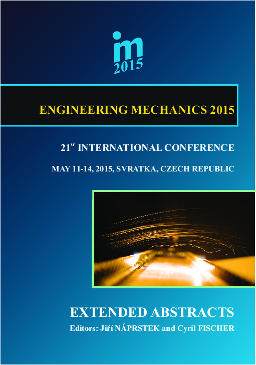Proceedings Vol. 21 (2015)

ENGINEERING MECHANICS 2015
May 11 – 14, 2015, Svratka, Czech Republic
Copyright © 2015 Institute of Theoretical and Applied Mechanics, Academy of Sciences of the Czech Republic, v.v.i., Prague
ISSN 1805-8248 (printed)
ISSN 1805-8256 (electronic)
list of papers scientific commitee
pages 184 - 185, full text
In consequence of an array of degradation mechanisms there is a change of stone characteristics used in historic objects. One of the negative changes is deterioration of mechanical properties, which may often lead to losses of original substance and gradual disintegration of works of art or handcraft made of stone. To prolong the lifespan of such damaged cultural-heritage objects a process called consolidation is often carried out within the framework of conservation treatment. During the process of conservation treatment the damaged stone is impregnated with a consolidating material, which is to provide the stone with a new binder capable of renewing its cohesion to a certain extent. Currently, a wide range of organic and inorganic consolidating agents of various characteristics is available, from synthetic polymers to silicic acid esters. Long-term experience shows that not only is the consolidating effect of the actual agent important, but also its lifespan and impact on the subsequent aging of the treated stone. Thus, in the past few years more emphasis has been laid on the compatibility or – to express it more precisely – the material similarity of the agents used in the process of conservation and restoration of works of art or handcraft.
back to list of papers
Text and facts may be copied and used freely, but credit should be given to these Proceedings.
All papers were reviewed by members of the scientific committee.

 Powered by
Imce 3.20 © 2023, Pavel Formánek, Institute of Thermomechanics AS CR, v.v.i. [generated: 0.0107s]
Powered by
Imce 3.20 © 2023, Pavel Formánek, Institute of Thermomechanics AS CR, v.v.i. [generated: 0.0107s]